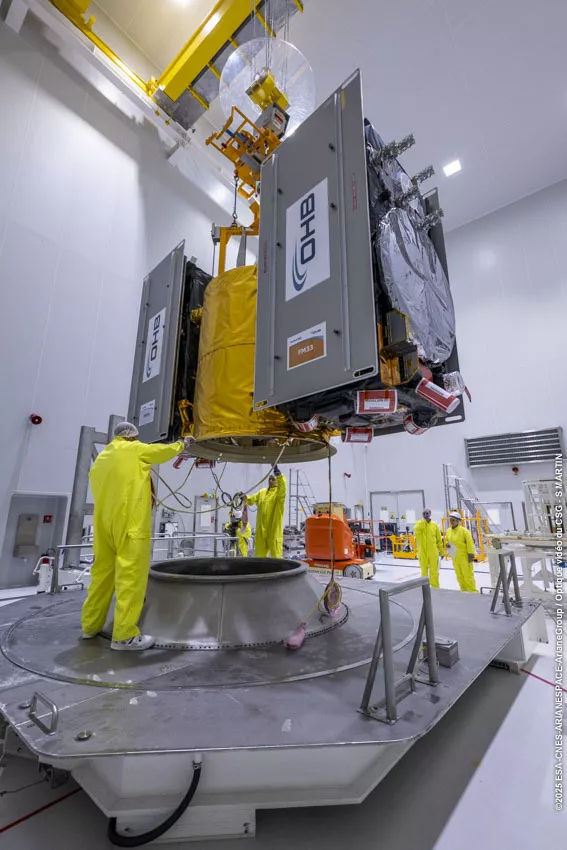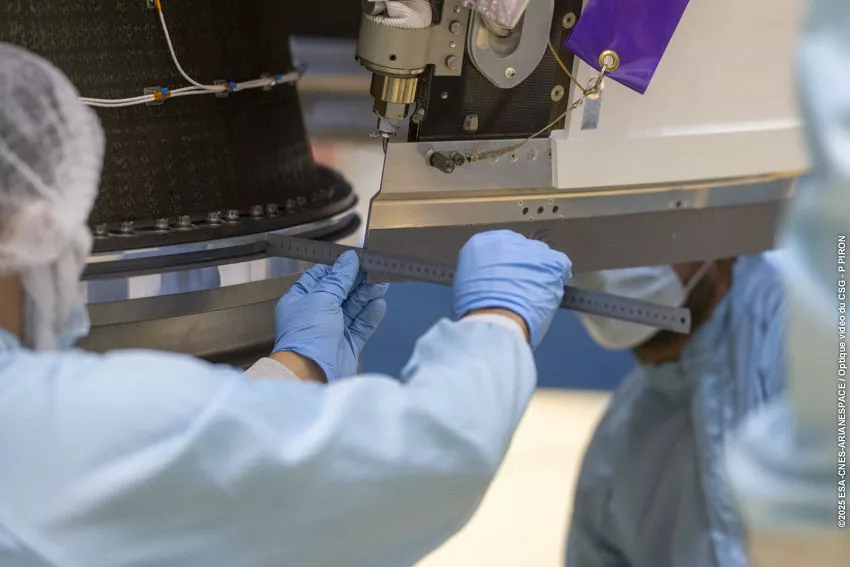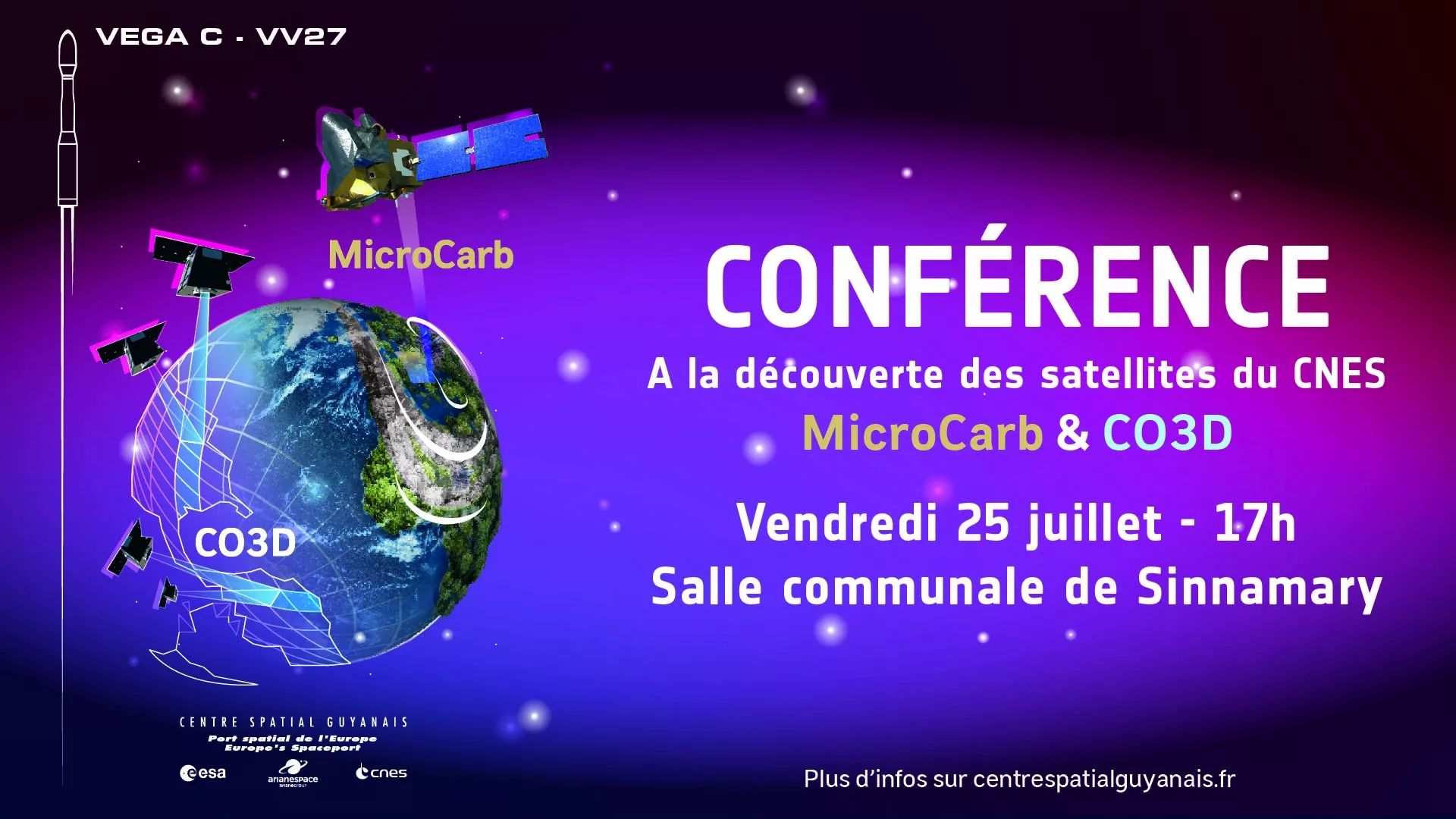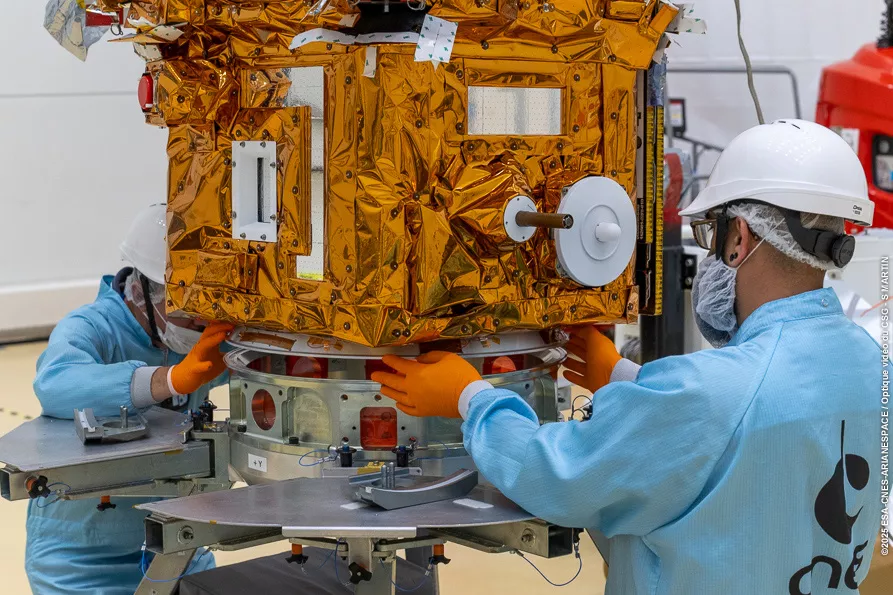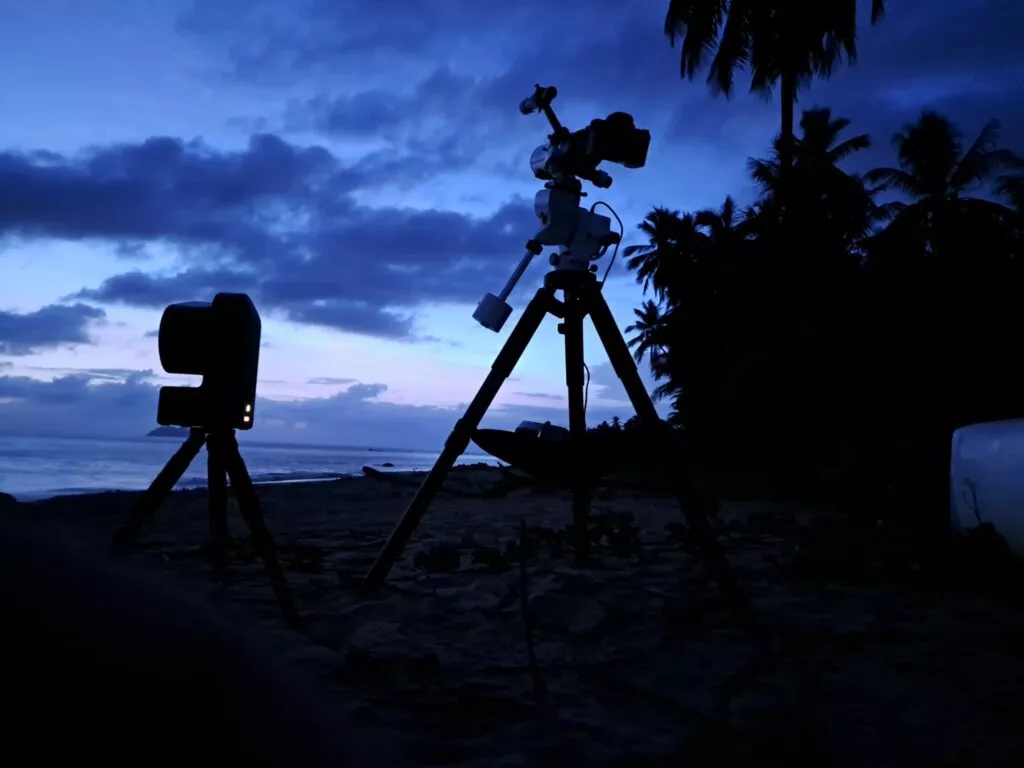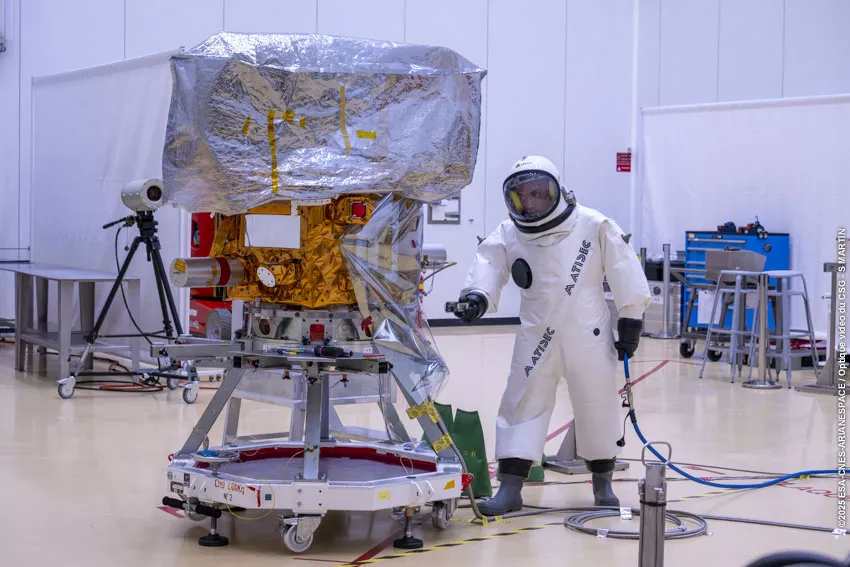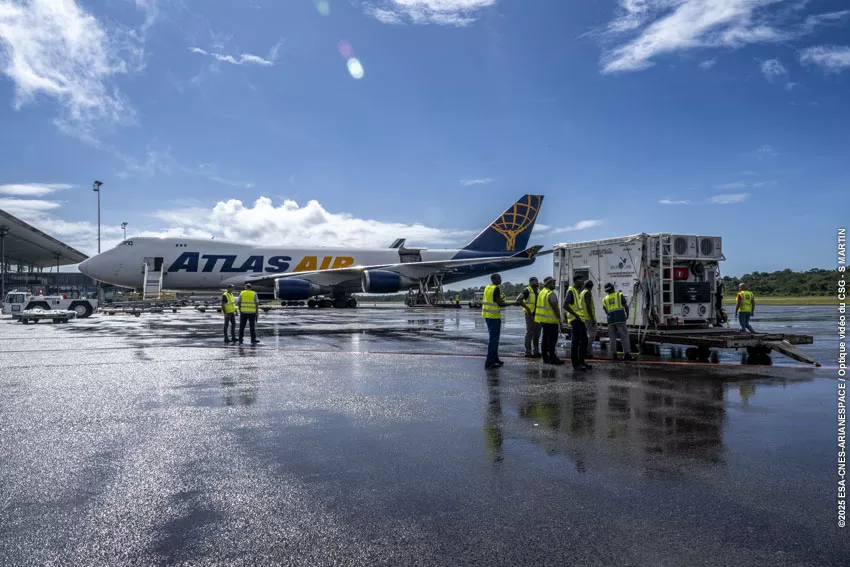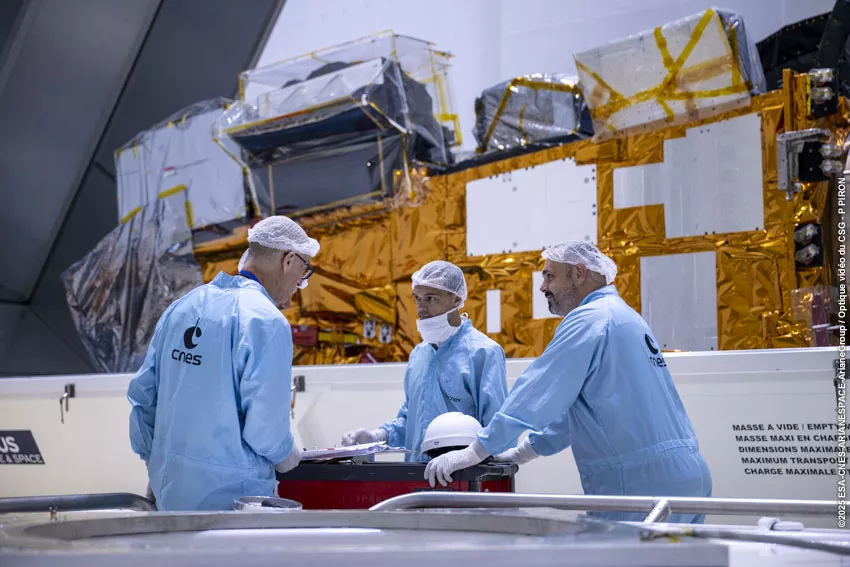Flight Vega-C : VV26 mission in a nutshell
On April 29, 2025, Vega-C will launch Biomass, the European Space Agency’s Earth Explorer satellite from Europe spaceport at 6:15 a.m. local time (09:15 a.m. UTC, 11:15 a.m. CEST).
VV26 in a nutshell
Payload : Biomass
Client : Agence spatiale européenne (ESA)
Mission : Mesure du volume global des forêts et quantification de la réduction de biomasse
Payload weight : 1 240 kg
Lifetime : 5 years
Targeted orbit : Sun-synchronous orbit (SSO) at an altitude of approximately 666 km
Inclination: 98°
Time : 6h15 (heure locale à Kourou), 11h15 (CET), 10h15 (UTC)
Mission duration (from lift-off to separation of the satellite) : 57 minutes
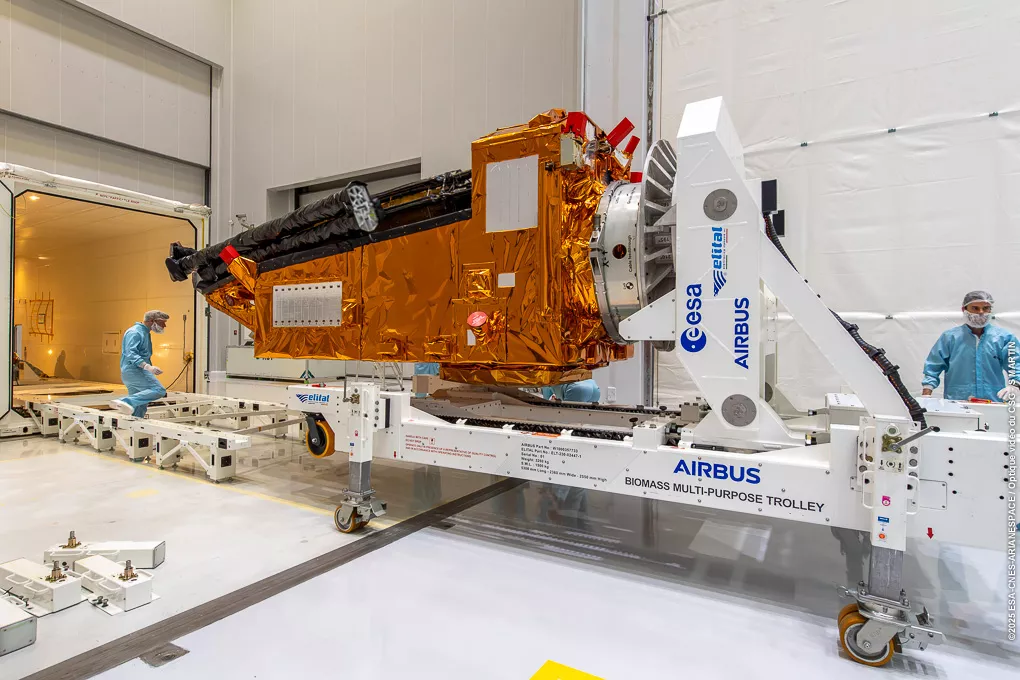
ESA/CNES/Arianespace/Optique vidéo du CSG
On Tuesday April 29th, 2025, at 6:15 a.m. local time (09:15 a.m. UTC, 11:15 a.m. CEST), Vega-C is to launch the European Space Agency’s (ESA) Earth Explorer Biomass satellite from Europe’s Spaceport. The mission called “VV26”, will place its passenger on board a Vega C launcher, into Sun-Synchronous Orbit at an altitude of around 666 km. Spacecraft separation will occur 57 minutes after lift-off.
About Biomass
The Biomass satellite carries the first P-band synthetic aperture radar to observe Earth from space. Thanks to its long wavelength, around 70 cm, the radar signal can penetrate all the way through the forest canopy. This allows it to collect information on the height and structure of different forest types and measure the amount of carbon stored in the world’s forests and how it changes over time. In addition, the Biomass mission will map subsurface geology in deserts, the ice structure of ice sheets and the topography of forest floors.
Biomass is the seventh satellite in ESA's Earth Explorers program. These satellites are recognised as being among the world’s leading research missions, delivering groundbreaking scientific insights about Earth’s complex systems.
Forests, the ‘Earth’s green lungs’, absorb around 8 billion tonnes of carbon dioxide from the atmosphere each year. Deforestation and degradation, particularly in tropical regions, are causing carbon stored in forests to be released back into the atmosphere. Quantifying the global carbon cycle is essential to understanding the subsequent implications for our climate.
Flight sequence
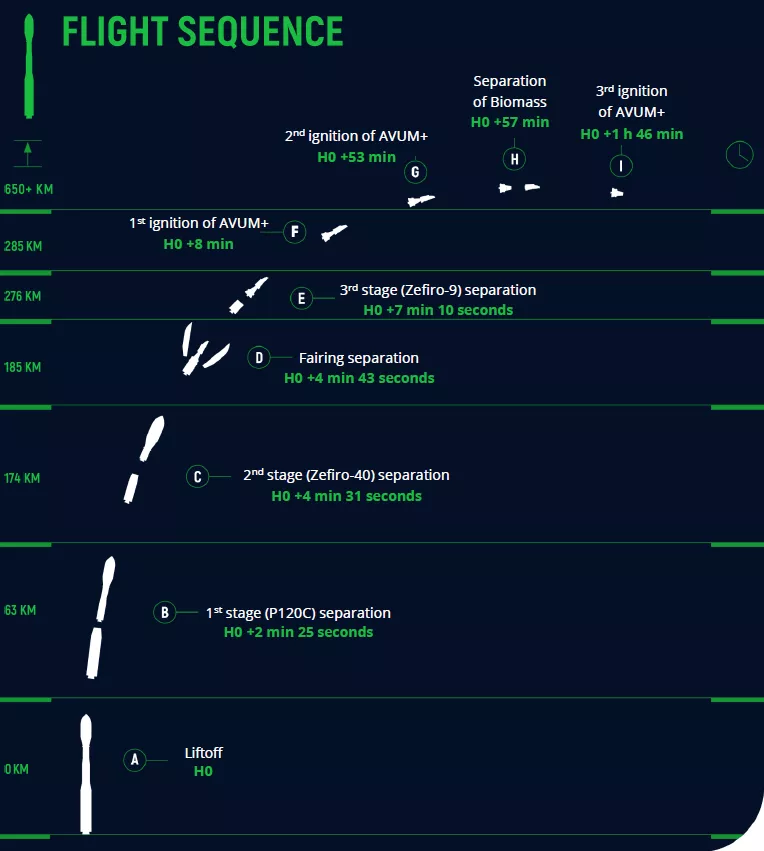
On the same section
-
VA266 mission in a nutshell
01/12/2025VV28 mission in a nuthsell
01/12/2025VA264 mission is a success!
04/09/2025VV27: behind the scenes at Europe’s spaceport as MicroCarb and CO3D get ready for lift-off
31/07/2025VV27: two conferences to find out more about satellites
30/07/2025Flight Vega-C : VV27 mission in a nutshell
24/07/2025Stargazing Event Ahead of the VV27 Mission Launch
